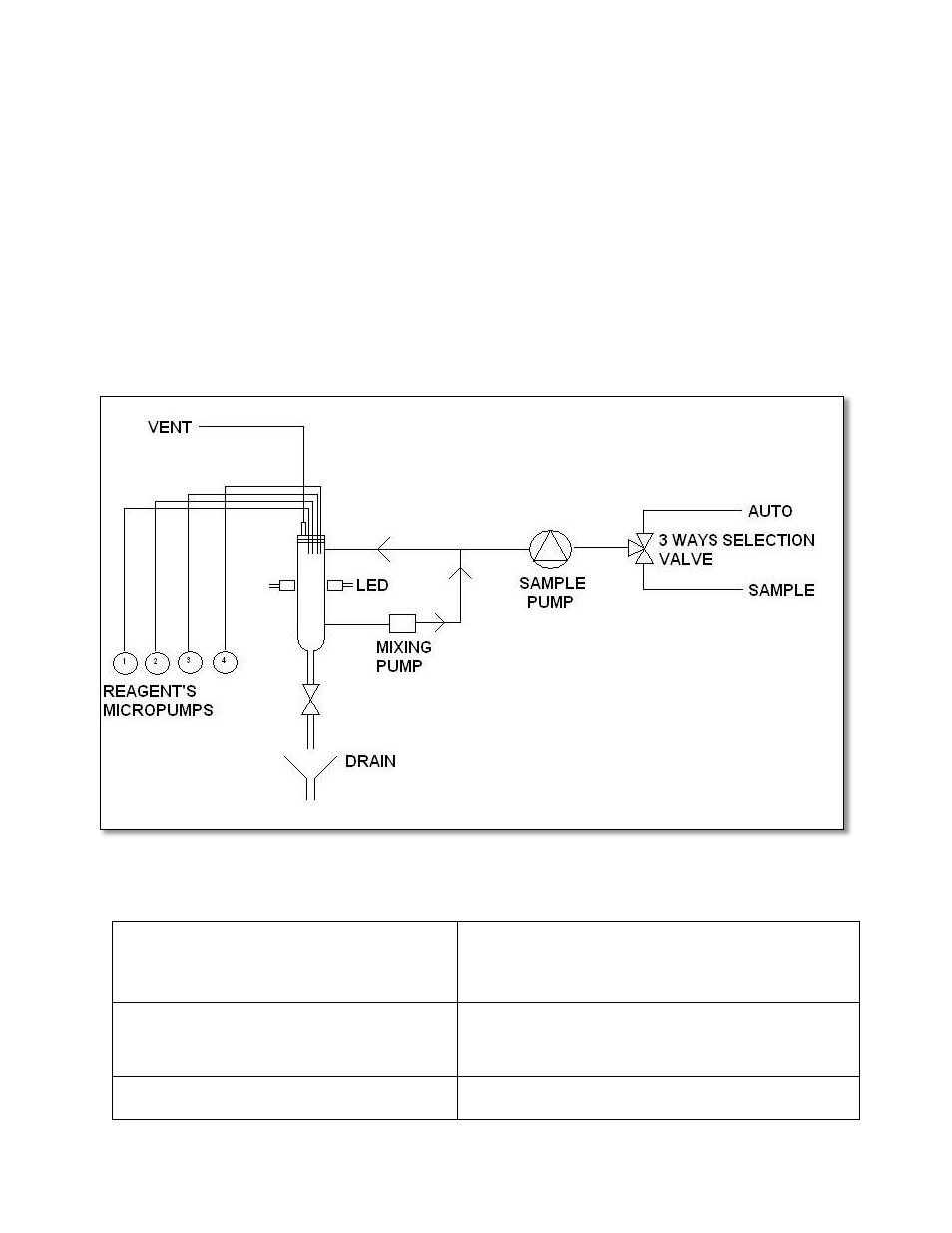3 analysis cycle, 1 typical run sequence – Electro-Chemical Devices (ECD) CA6 Hardness Analyzer User Manual
Page 20

2.3 Analysis Cycle
A typical Analysis Program in the Model CA-6 would have the following structure: Rinse the colorimetric
reaction cell and take a sample, add one or more reagents like a buffer or masking agent and then make
the first measurement, the reference measurement. The reference measurement eliminates interfering
factors such as sample color and turbidity, miscellaneous color from the reagents and refractive index
variations.
After the reference reading, the color producing reagents are added. The sample is mixed and allowed
time to complete the color forming reactions before taking the second measurement, the Reading
measurement. The reference and reading values are used to calculate the concentration using the
calibration factor. The reaction cell is drained and rinsed several times before starting the next
measurement.
Fig. 2-3 Flow diagram
2.3.1 Typical Run Sequence:
Conditioning, rinsing and sampling
Drain, rinse and sample functions
First the cuvette is drained and rinsed (these steps can also be
programmed at the end of the run). The hydraulic lines and the
colorimetric cell are rinsed prior to taking the actual sample. Then
the sample is taken.
Addition of reagent(s)
Add reag function
Depending on the method one or more reagents are added before
the reference reading.
Mixing and wait
The mixing pump is activated and the liquid is pumped from the
lower part to the upper part of the colorimetric cell. The waiting
9
